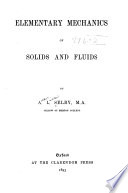 Newton's law of gravitation states that any two bodies attract each other with a force proportional to the product of their masses and inversely proportional to the square of the distance between them, ie, (3. Newton's law of gravitation states that any two bodies attract each other with a force proportional to the product of their masses and inversely proportional to the square of the distance between them, ie, (3.  The Fundamentals of Astronomy - Page 94by Samuel Alfred Mitchell, Charles Greeley Abbot - 1927 - 307 pagesFull view The Fundamentals of Astronomy - Page 94by Samuel Alfred Mitchell, Charles Greeley Abbot - 1927 - 307 pagesFull view - About this book
 | Balfour Stewart - 1875 - 270 pages
...answered by Newton, who came to the conclusion that every particle of matter attracts every other particle with a force proportional to the product of their masses, and inversely proportional to the square of their distances. But this only drives the mystery of gravitation from... | |
 | Balfour Stewart - 1875 - 244 pages
...answered by Newton, who came to the conclusion that every particle of matter attracts every other particle with a force proportional to the product of their masses, and inversely proportional to the square of their distances. But this only drives the mystery of gravitation from... | |
 | Balfour Stewart, Peter Guthrie Tait - Cosmology - 1875 - 274 pages
...answered by Newton, who came to the conclusion that every particle of matter attracts every other particle with a force proportional to the product of their masses, and inversely proportional to the square of their distances. But this only drives the mystery of gravitation from... | |
 | Edward John Chalmers Morton - Astronomers - 1882 - 370 pages
...and if all these centres attract each other, the force between any two being proportional directly to the product of their masses and inversely to the square of the distance between them ; — then, if we suppose each body of the solar system to have been projected... | |
 | A. L. Selby - Mechanics - 1893 - 328 pages
...asserts that any two particles of matter attract one another with a force which is proportional directly to the product of their masses, and inversely to the square of their distance apart. The evidence in favour of this law is mainly derived from the consideration of the elliptic... | |
 | Joseph Sweetman Ames - Physics - 1897 - 546 pages
...mutual action is such that, if free to move, they approach each other with a force which is proportional to the product of their masses and inversely to the square of their distance apart, ie (1) where 7 is simply a constant of proportionality. It may be proved without much difficulty... | |
 | Carveth Read - Logic - 1898 - 352 pages
...were manifest ; and the hypothesis was that their motions might be due to their attracting one another with a force proportional to the product of their masses and inversely proportional to the squares of the distances between them. In the Ptolemaic Astronomy, again, there... | |
 | Leander Miller Hoskins - Mechanics - 1900 - 456 pages
...force which acts along the line joining the two particles, and whose magnitude is proportional directly to the product of their masses and inversely to the square of the distance between them. The proportionality expressed in this law may be stated algebraically as... | |
 | Robert Stawell Ball - Astronomy - 1901 - 418 pages
...law of gravitation, which expresses that the force between any two bodies is proportional directly to the product of their masses and inversely to the square of their distance. We have one further supposition to make, and it is an important one. We shall assume that though each... | |
 | Arthur Gordon Webster - Dynamics - 1904 - 1122 pages
...into the dynamical one, that the sun attracts the different planets with forces proportional directly to the product of their masses and inversely to the square of their distances from itself. From this we may pass to Newton's great generalization: Every particle of matter... | |
| |